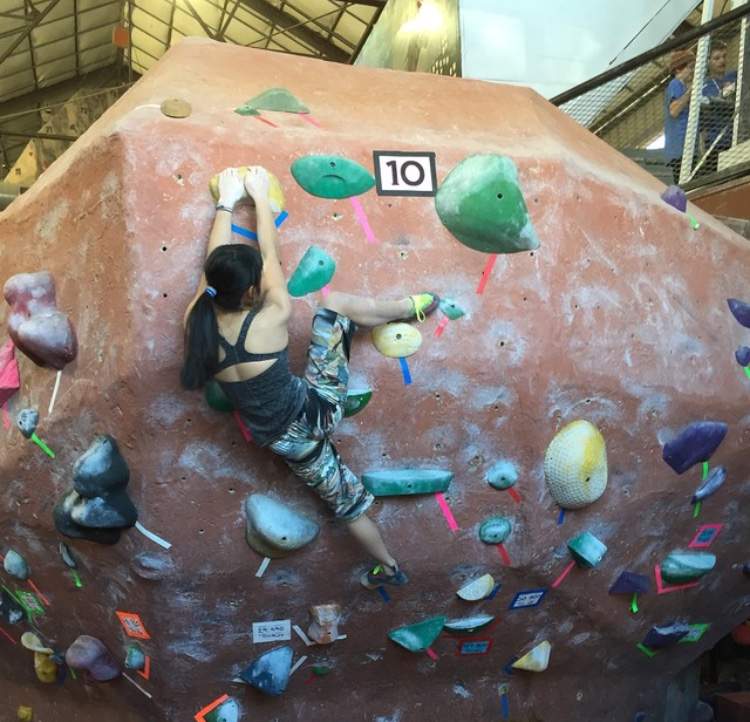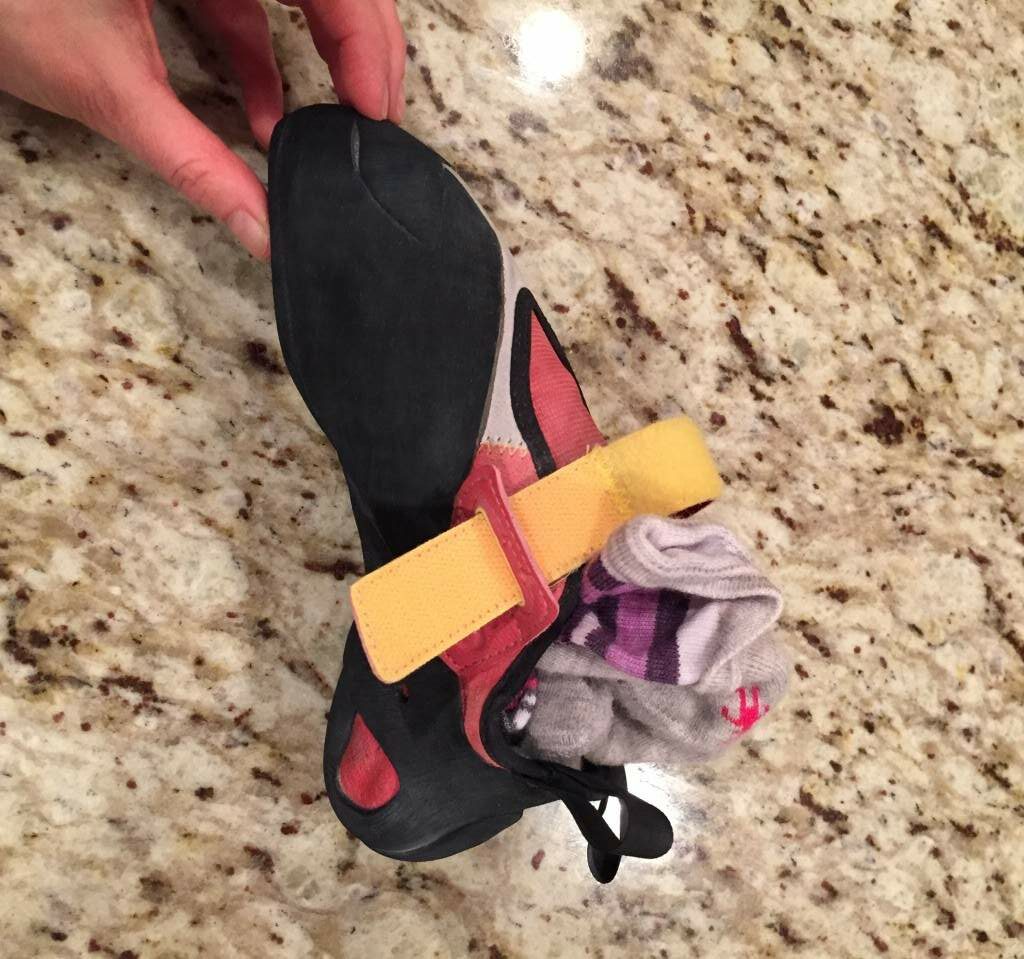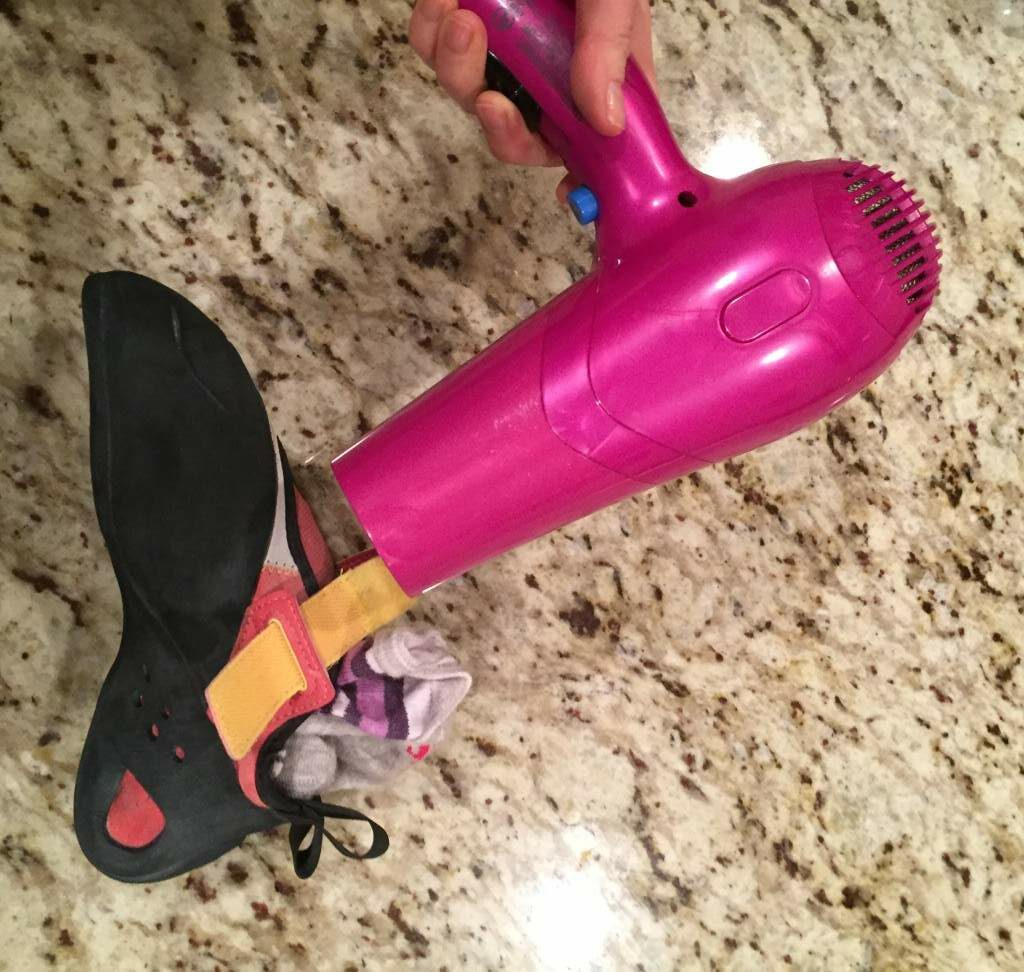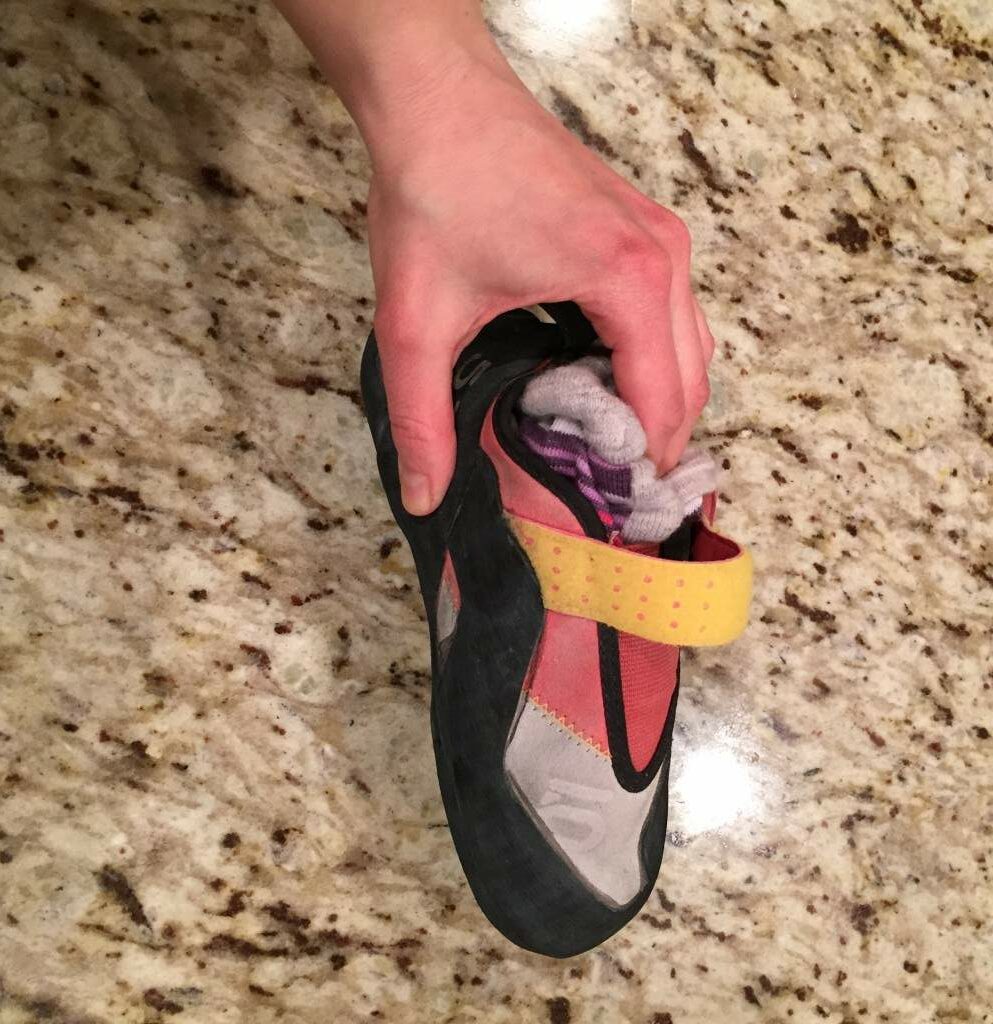Are you looking for “how to break in too tight climbing shoes?” then this is for you! You know that feeling when you get a fresh new pair of climbing shoes, and they are so pretty, and you are so psyched on them? And you insist that this is the correct shoe for you, as you cram and contort your foot to get the shoe on. Then you start to climb in them and you’re thinking to yourself “Did my feet get bigger? I know I’m usually a size 38.”
You make it through one climb, and wincing you take your shoe off, and your foot is already starting to look like something from a horror film. Yeah, I’ve been there too. Another great interview covered on Mother’s day special, must-read!

Ashima could not do a sick heel hook in ill-fitting shoes!
I know for many of you diehards out there the solution for too tight shoes is “Suffer!! No pain no gain!” and that you in fact pride yourself on your feet growing weird new protrusions, and your toes folding over themselves, etc. But what if you’re like me and you are basically…a huge baby when it comes to foot pain? I’ll admit it! If my feet are absolutely killing me, it’s hard for me to focus on climbing hard. So what’s a gal to do when you plunked down a hefty chunk of change on shoes and you realize they don’t fit? Today I’ve got some tips for all you tender-footed folks out there.
First Of All, Try To Get Shoes That Actually Fit
I know, I know, that’s not a special trick, but we could really skip all the tricks if we actually just get shoes that fit, so it’s worth reviewing. The first thing to remember is that everyone has different foot shapes (different widths, arch heights, toe lengths, sometimes one foot is bigger than the other, etc.) and every climbing company varies in terms of how their shoes fit (and then there is variation from shoe to shoe within each brand).
Climbing shoes are meant to be snug, but shouldn’t be creating “hot spots” meaning really super painful, red, raw or blistered spots. There’s a lot to be said on the topic of proper shoe fit, which is outside the scope of today’s post, but here are some good considerations in brief from Five Ten (these are printed on the side of all their boxes):
- Street shoe size is only a starting point.
- Eliminate dead space but don’t fit so tight as to create hot spots.
- Climbing shoes should not be uncomfortably tight, otherwise tears might keep you from seeing micro edges.
- Feet swell during the day, from 1/2 size to a full size. Try on shoes in the afternoon if possible.
- Synthetic uppers won’t stretch-you’ll have the same fit in 6 months, you should have no hot spots when you are up on your toes.
I would also add a couple other points:
- Demo your shoes first if you can, and make sure they actually work for your unique feet. Most climbing gyms will do shoe demos from time-to-time, and also some outdoor retailers have better return policies than others (look before you buy) so you could try them out and return them if they are torturous.
- If you are a beginner, remember that it takes time for your feet to get used to climbing shoes, and this varies from person-to-person. Over the years I have built up calluses and stronger skin that seems to have allowed me wear a snugger shoe. So go with what feels right, and know it may evolve over time.
- Bottom line: don’t wear a shoe because someone told you it was a good shoe, find what works for you. The best climbing shoe is one that you feel great climbing in, whatever that means for you!
How To Break In Too Tight Climbing Shoes: 5 Easy Steps
So now say you ignored the above tips (which I did with this last pair, I’ll be honest), and you ended up with a shoe that is giving you crazy hot spots. For me, the Hiangles are awesome in the toes, but the heel is crazy tight. First, keep in mind that the rubber parts of your shoe really won’t stretch. When we are talking about stretching a climbing shoe we are mostly just talking about stretching out the leather parts. Certain shoes have much more rubber (for example, moccasin style shoes like the Hiangle), and therefore are trickier to break-in.
I have heard a number of different suggestions, such as putting your shoe in the microwave (probably not an awesome idea if there is any metal on it at all), putting your shoe in the oven, or wearing your shoe in the shower and/or climbing in the shoe while it’s wet (ew).
Here’s what I did with my Hiangles:
Step 1: Stuff The Shoe
I just used socks and tried fitting as many as I could in there, you can use any fabric. And I made sure to really stuff the heel, since this was the part that was giving me the most trouble.

Step 2: Take A Blow Dryer To The Shoe
Basically do this just to warm up the shoe for the next part. I did this for about a minute until the shoe felt warm to the touch throughout.

Step 3: Push The Fabric Up Against The Insides Of The Shoe
Do this for a couple minutes. And while you are at it, bend the shoe a bunch. I usually do step 2 and 3 a few times before moving on.

Step 4: Wear The Shoe For A Little Bit While Climbing As Soon After Steps 1-3 As Possible
Maybe do a few pitches, or a few boulders, but bring a back up pair of shoes and change into those after a bit. Don’t over do it at first.
Step 5: Repeat Steps 1-4 For One Or Two More Sessions
Repeat until you can comfortably wear your new, broken in shoe.
This worked really well for me. I went from thinking I would get rid of the Hiangle, to it now being my go-to shoe. Hope this little trick helps you (and your feet) have a better climbing experience. Do you have any tricks to break in shoes? If so, we want to hear him, so feel free to leave them in the comments!
Climb On!
Missy






